Best bikepacking sleeping bag 2025 – our pick of the best sleeping bags and quilts for a night under the stars
The best lightweight sleeping bags to keep you warm and comfortable wherever your next epic bikepacking trip leads you

The best bikepacking sleeping bag will hit that sweet spot between lightweight, packable and comfortable.
If you want to ride day after day, a good night's rest is essential. Being able to snuggle in at night and recharge for the next day's ride will have noticeable effects on your cycling performance. In fact, studies have shown that quality sleep will impact recovery, endurance, reaction time, hand-to-eye accuracy and cognitive ability. These are all important skills when riding and navigating on a bikepacking trip. If you don't have the right sleeping bag, you could be in for a miserable night that will lead to a miserable day, and the ball won't stop rolling.
At the same time, choosing the right gear can feel overwhelming. The choices are vast with endless options and, because everyone sleeps differently, personal preference is a massive factor when it comes to what you prioritize when shopping for a sleeping system. Those who fall asleep as soon as their head hits the pillow and run hot through the night can sacrifice a little extra comfort which would leave restless or temperature-sensitive sleepers awake all night.
If you're unsure what to look for, head to the bottom of this article to read some suggestions about how to narrow down the choices. Keep reading to see our complete list of the options our expert reviewers have picked to meet those goals. Our top choice is the Sea to Summit Ultralight Sleeping Bag and our value pick is the REI Co-op Magma Sleeping Bag.
If you're planning a bike trip make sure you take a look at our guide to bikepacking which covers everything you'll need, and also check out our reviews of the best bikepacking bags.
The quick list
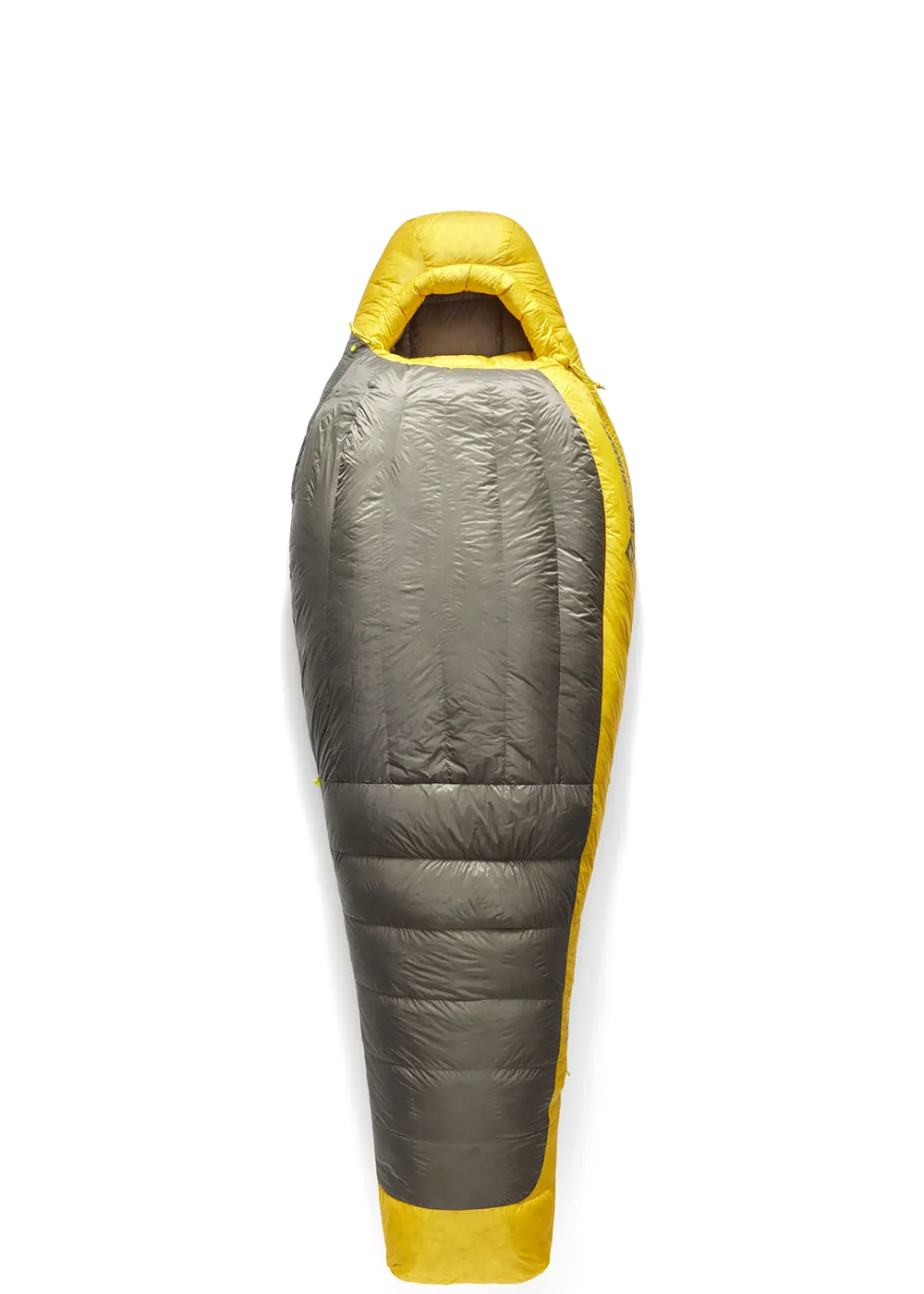
Best bikepacking sleeping bag overall
Lightweight and available in a range of temperature options.

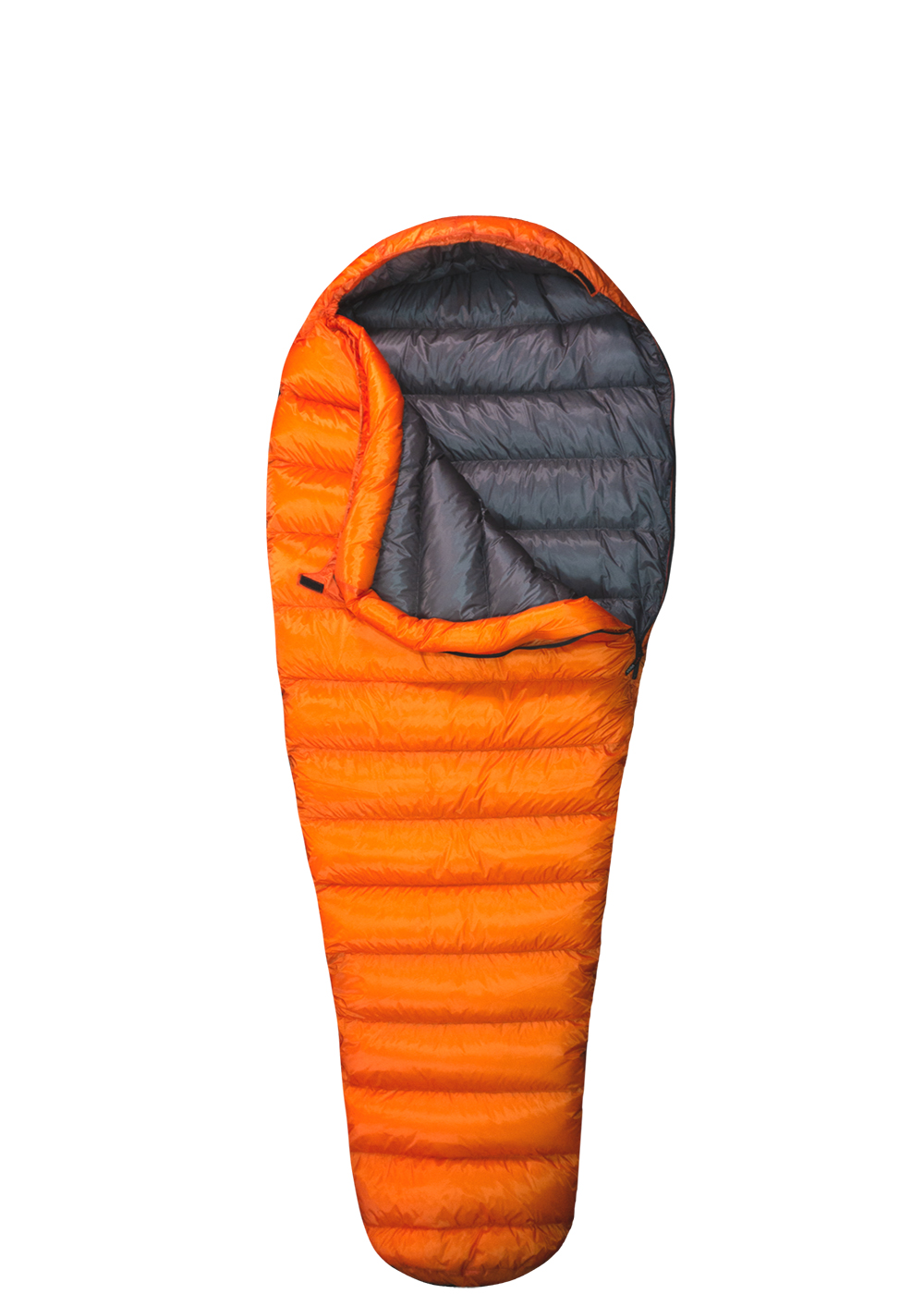
Best lightweight bikepacking sleeping bag
Super lightweight and great for the summer.

Best all-rounder bikepacking sleeping bag
Great balance of weight, pack size and warmth.
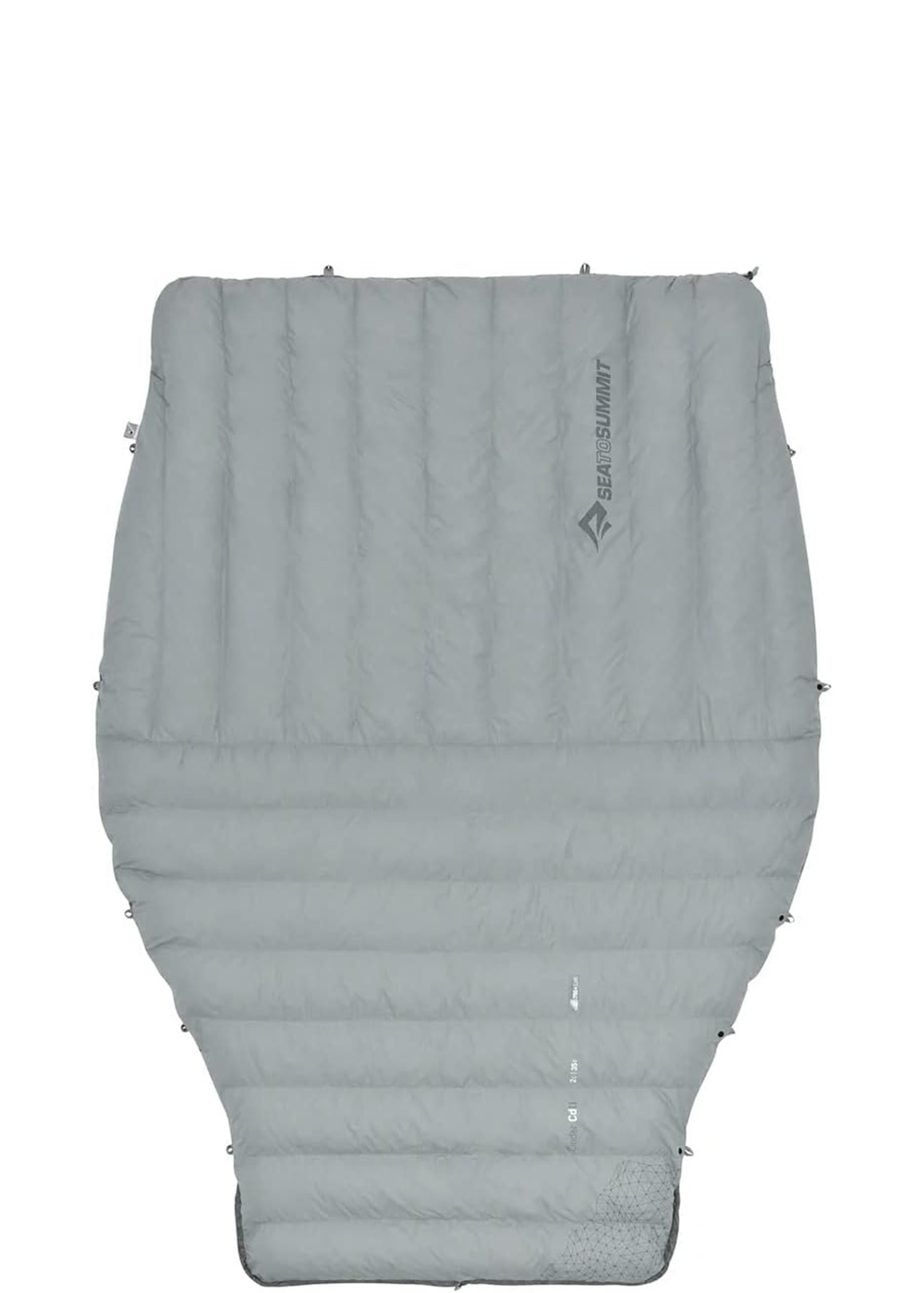
Best bikepacking summer quilt
A great summer quilt with drawstrings for extra warmth.
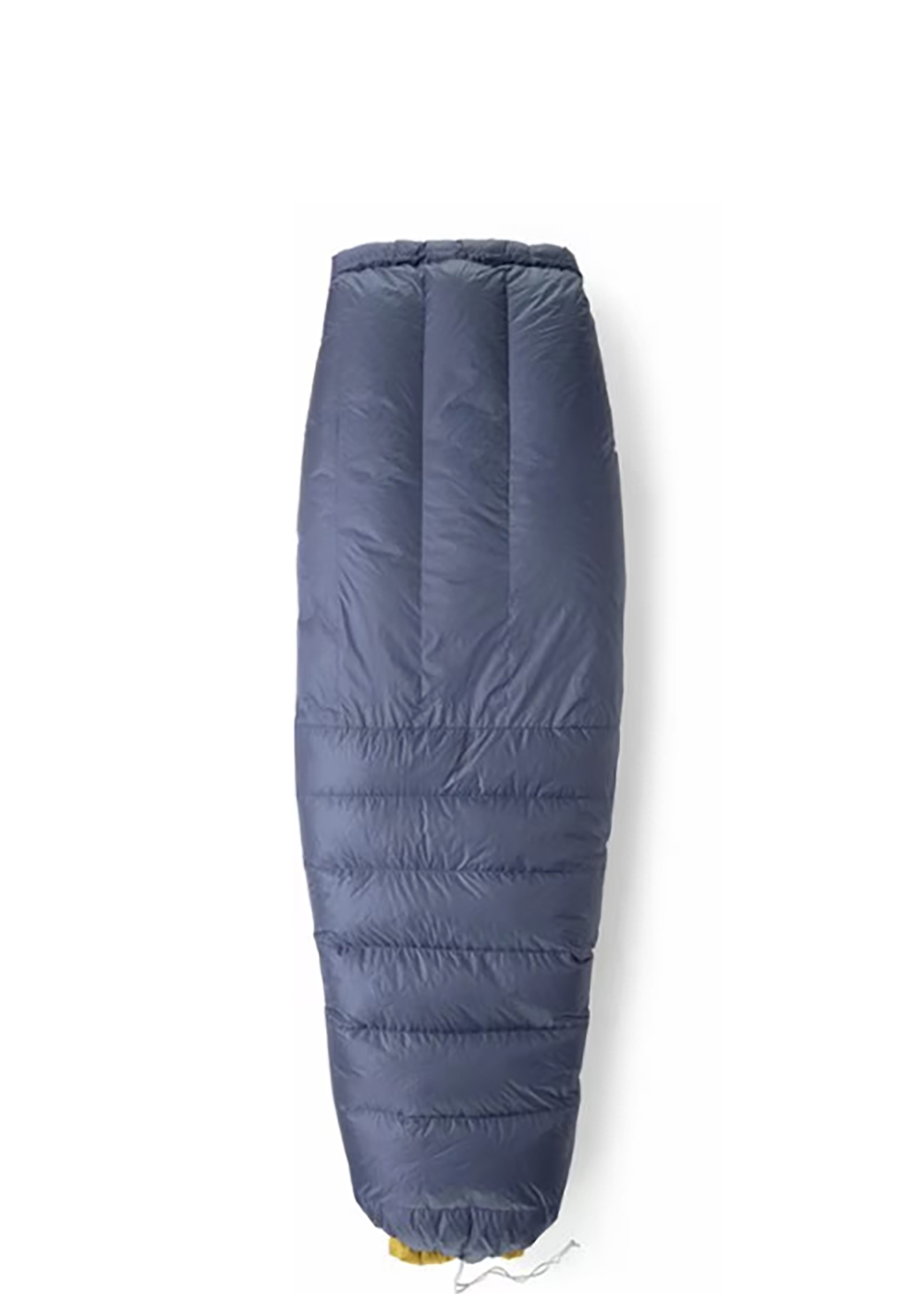
Best bikepacking three-season quilt
A quilt that's still warm enough for three seasons.
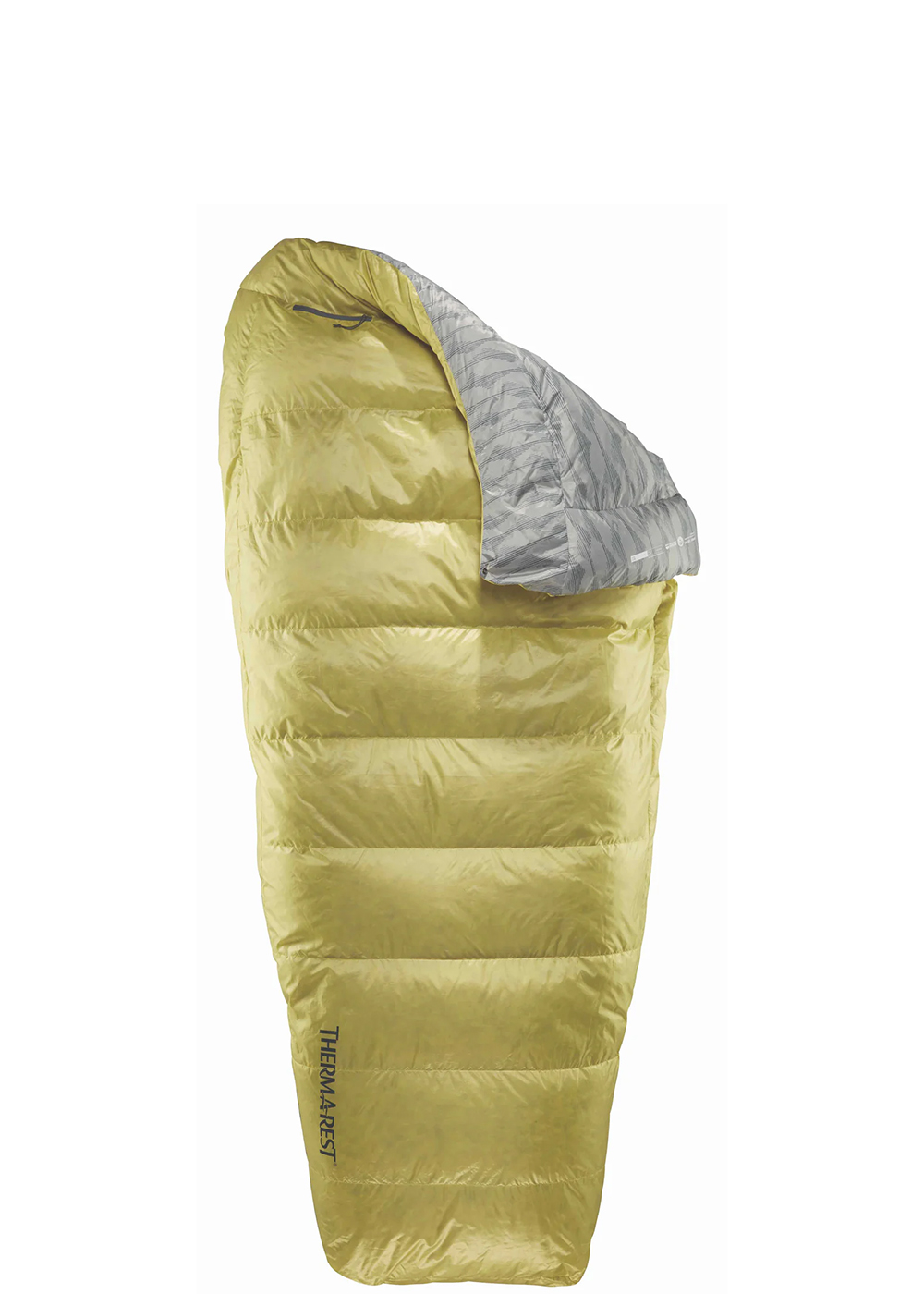
Best bikepacking sleeping bag
Why trust BikePerfect
1. Best overall

Sea to Summit Spark Ultralight Sleeping Bag
Specifications
Reasons to buy
Reasons to avoid
When you start talking about the absolute lightest sleeping bag available, things aren't always that clear. Companies start to qualify that it's the lightest compared to this or that, based on temperature ratings or bag size. All that said, the Sea to Summit Spark Ultralight sleeping bag might be the lightest sleeping bag at the 45F rating, or it might not, but it's certainly very close. If you think you'd rather give up a little weight in the quest for comfort, Sea To Summit does offer a range of heavier, warmer bags in the same series which are still ultralight in comparison to the competition. For more, see our Sea to Summit Spark SP2 review.
2. Best value
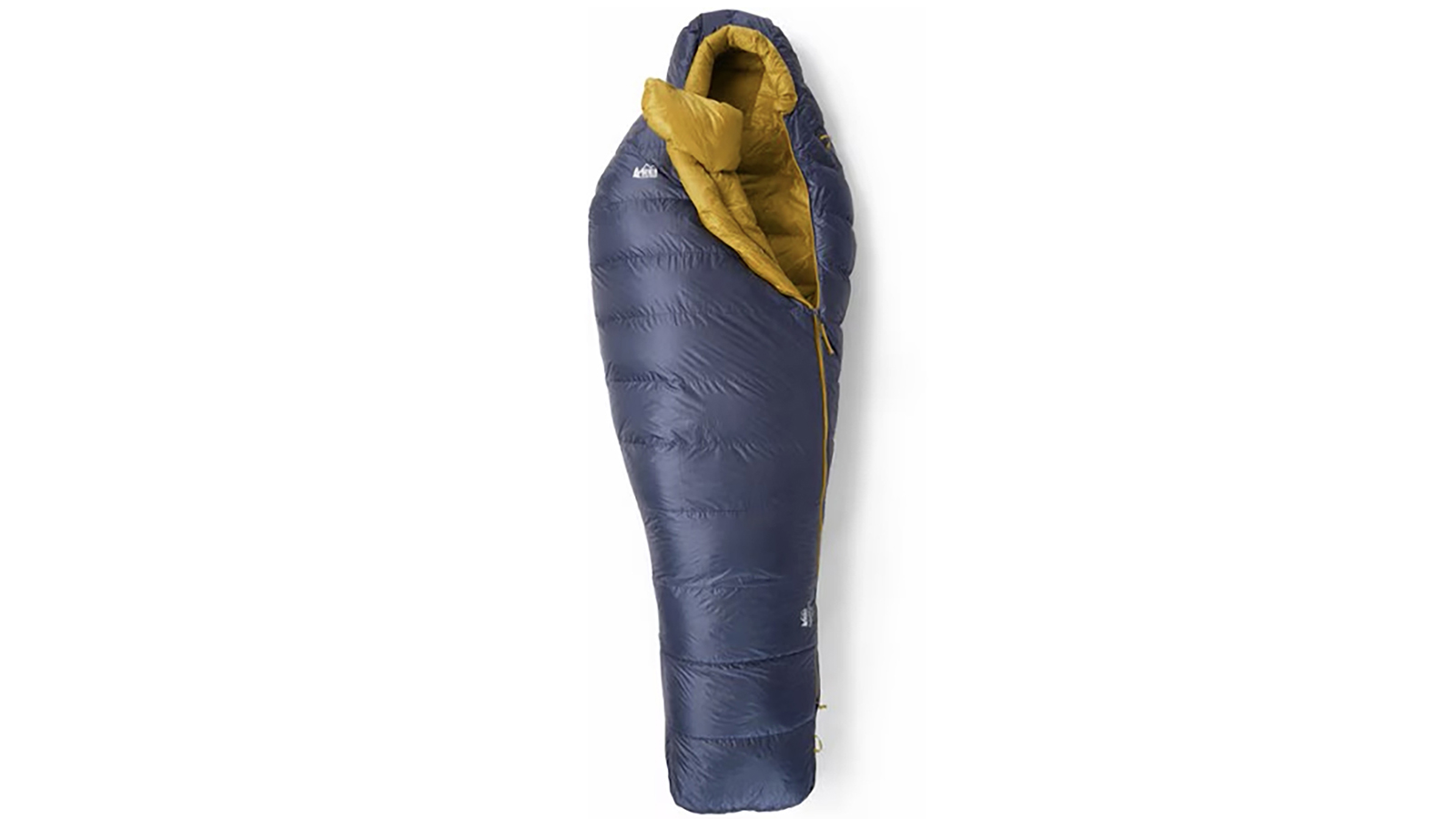
REI Co-op Magma Sleeping Bag
Specifications
Reasons to buy
Reasons to avoid
Getting out in nature is one of the things that makes bikepacking what it is. With that in mind, it's great to think about all the ways our sport impacts the natural world. The materials used to build sleeping bags aren't exempt from that and REI makes it easy to be conscientious. The down used is RDS-certified "to ensure that down and feathers come from animals that have not been subjected to any unnecessary harm". Then the entire construction is Bluesign certified "to keep chemicals of concern out of the process".
The bag itself features a Pertex water-resistant shell with 850-fill-power goose down insulation. It's not too narrow at the bottom so there is a decent amount of leg wriggling space and the close-cut hood and yoke around the shoulders should stop any drafts from getting in.
3. Best lightweight
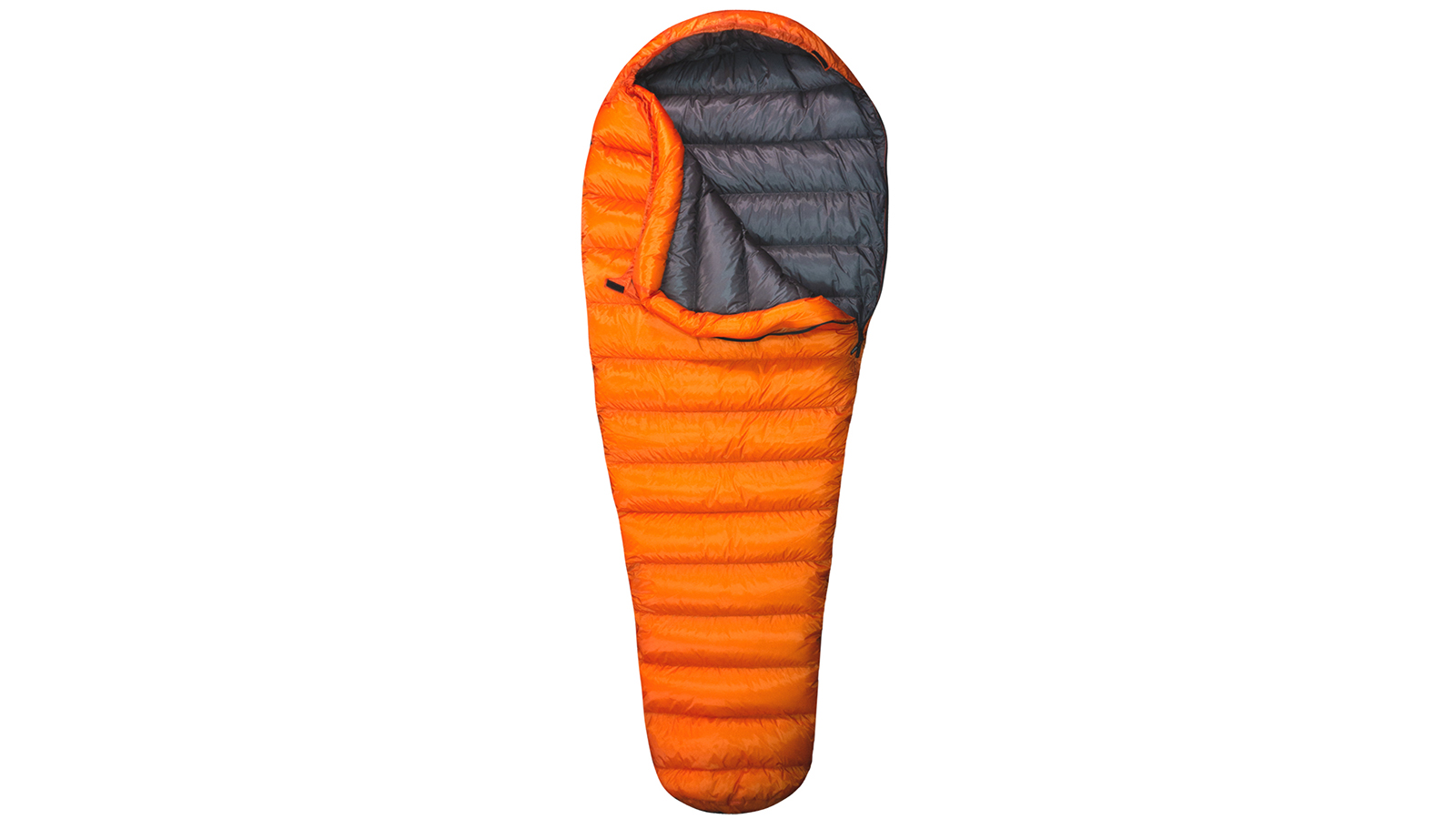
Western Mountaineering Flylite Sleeping Bag
Specifications
Reasons to buy
Reasons to avoid
Western Mountaineering's Flylite is a groundbreaking product. With a weight of only 404g (medium) and no sewn-through seams, it's unlike anything else out there. It's not a bag for cold weather but if you are travelling in the summer and you want to stay as light as possible it's hard to do better. It compresses to the size of a water bottle and there are three sizes for a variety of body types.
4. Best all-rounder
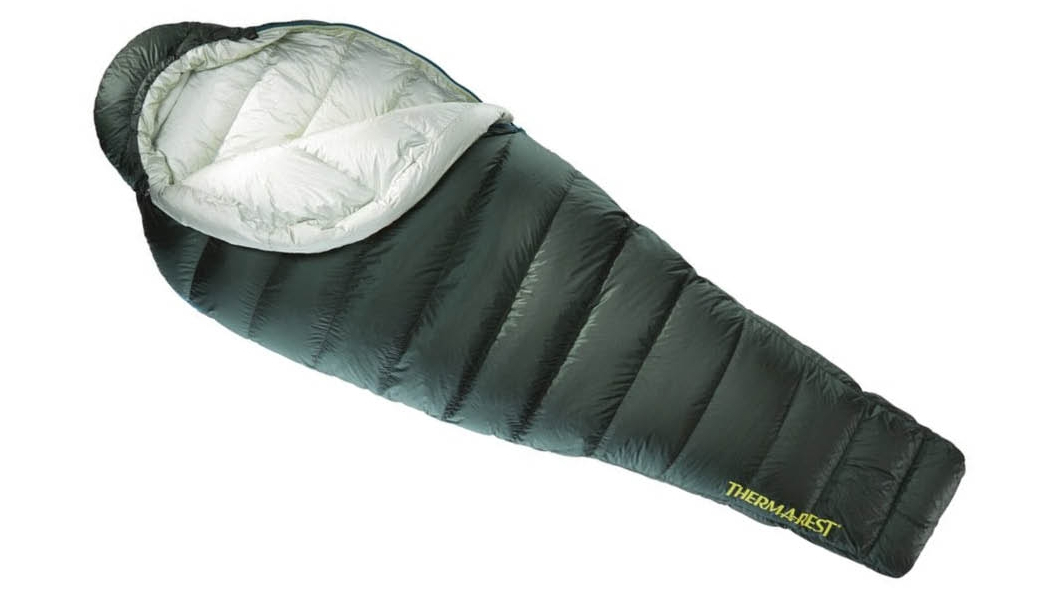
Therm-A-Rest Hyperion Sleeping Bag
Specifications
Reasons to buy
Reasons to avoid
Most of the top brands all have a sleeping bag that is designed to be comfortable around single digits and pack away ultra-small. For most bikepackers, this is the sweet spot as it comfortably covers summer and, with an extra layer and socks, can remain comfortable into the shoulder months whilst keeping pack sizes small.
Therm-A-Rest's Hyperion 32 is one of the best bags at walking the line between lightweight, small pack size while still staying warm. This is done with zoned 900-fill Nikwax Hydrophobic Down which has a good loft to trap heat and feels luxurious inside as well. There are little straps on the bottom that hold your mat, perfect if you have a tendency to roll about in your sleep.
5. Best summer quilt

Sea to Summit Cinder Down Quilt
Specifications
Reasons to buy
Reasons to avoid
Building a sleeping system that uses layering is a great method to add versatility over a range of temperatures – take the Cinder Down Quilt for example. If things get a little chilly use the drawstrings to pull it tighter around you. Swap to a medium-weight Sea to Summit sleeping bag and use that for the shoulder seasons. When winter comes around, combine the two pieces and you get a solution for even colder weather. Two pieces of gear combine to fill three needs and almost year-round camping potential.
Sea to Summit's QuiltLock System allows the quilt to attach to any Sea to Summit sleeping bag. Press studs connect two quilts together to make a double, attach your quilt to a Sea to Summit mat, or secure around the neck to help trap in more warmth.
6. Best three-season quilt

REI Co-op Magma Trail Quilt 30
Specifications
Reasons to buy
Reasons to avoid
Still easing into the idea of a quilt instead of a sleeping bag? The REI Magma Trail Quilt might be a good idea. In a lot of ways, it's a three-season-capable sleeping bag. There's a familiar footbox design and the ability to really snug it up so it's very close to a traditional sleeping bag. On the other hand, there's no zipper or back, so there's no way to completely mistake it for a sleeping bag. The hybrid approach means you can stick with the familiar but take advantage of the best features of a blanket when it suits you.
7. Best sleep-system quilt

Therm-a-Rest Corus Down Quilt
Specifications
Reasons to buy
Reasons to avoid
Therm-a-Rest makes some of the best sleeping pads on the market. It's a market leader and if you are looking for a new sleeping pad for your sleep system then Therm-a-Rest deserves a look. As with any sleep system, two pieces from the same brand can make sense. No matter what pad you decide on though, the Coros quilt is a quality option that will keep you comfortable in a range of situations. The Nikwax Hydrophobic Down eases worries about loss of warmth in damp environments. The large footbox leaves lots of space and will even fit the end of your pad to help keep everything connected.
How to choose the best bikepacking sleeping bags
- Down or synthetic insulation? - Sleeping bags will use either natural down or synthetic insulation. Down is more expensive but offers a better warmth-to-weight ratio. Synthetic insulation won't pack as small or light but will retain its insulating properties if it gets wet, synthetic bags are also easier to clean.
- Temperature rating - All sleeping bags will have a temperature rating, this provides some indication as to how warm a sleeping bag might be. The comfort range is what you would expect it to be and the limit is the estimated lowest temperature that an adult male can comfortably sleep. The extreme rating is the lowest temperature that an adult female can survive for 8 hours before hypothermia sets in.
- Packability - A vital consideration when choosing a sleeping bag that suits your bikepacking setup. How big is your front roll, seat pack, fork leg bags, or pannier bag? Will the sleeping bag fit alongside other items you might need for a night under the stars?
- Sleeping bag shape - Sleeping bags can come in two common shapes. A mummy sleeping bag will have a tapered shape for added warmth and a smaller pack size. Alternatively, a rectangular shape will have more space to wriggle around. If you sometimes bike pack with a significant other some rectangular bags can be zipped together to make a large two-person sleeping bag.
- Features - Loads of additional features can make one sleeping bag stand out above all the rest. Hood size, zip length, added neck baffles, pockets, and anchoring to attach it to a camping mat are worth considering based on your preferences and needs.
Best bikepacking sleeping bags FAQs
Is it best to get a sleeping bag or a quilt?
For bikepacking, backpacking, or just any kind of camping most people automatically think of a sleeping bag. Start doing some research though and you will undoubtedly find a lot of discussion about quilts. Bikepacking requires the lightest and most space-efficient gear possible. At a certain point that demand on kit means new thinking.
Sleeping bags are inherently insulation. If you are trying to reduce the weight of insulation there's really only so much you can do. You can use technology to bring down the weight but at a certain point, you reach a limit. In some ways, the limit is a price point issue but even with all the money in the world effective insulation requires bulk. When manufacturers reached that bottom weight limit they started to think differently. Instead of using lighter materials the obvious next step is to remove material altogether. That thinking leads to the camping quilt.
The real question that you have to ask is how do you provide the same warmth with less material? The modern camping quilt is the answer. Look at the sleeping bag and identify excess material that isn't doing anything. Look for areas where other gear can serve the same function.
When you are looking for a way to keep warm at night don't dismiss quilts just because you aren't familiar with them. A camping quilt is generally for warmer nights but a well-designed quilt can be just as good as a bag. Some quilts actually resemble bags far more than you might expect.
How does a sleep system work?
The sleeping bag vs sleeping quilt discussion rolls right into the sleep system discussion. You can't have one without the other. The innovation that quilts represent comes from looking at what it takes to be warm and comfortable at night. Instead of looking for a sleeping bag, then looking for a sleeping pad, then considering what clothing to bring, think of it all as a system.
A sleeping bag, or quilt, relies on the insulation of the sleeping pad to make it work. If things get colder than expected, your clothing will add extra insulation.
What temperature rating do I need?
People have a tendency to buy for the extremes. There's nothing inherently wrong with that but you will end up with more than you need most of the time. If you want to stay as light as possible, buy for what you expect to encounter.
The prepare-for-the-worst approach matters more when it comes to bikepacking. Every extra bit of weight and space adds up. If you buy a sleeping bag rated for extreme cold, it's bigger and heavier. Are you ever going to bikepack in the winter? Be realistic with yourself about your needs. The beauty of a sleep system is that you can supplement quite a bit. If you decided to chance it and go for a late-season trip, it's possible to add sleeping bag liners, extra clothing or an insulated mat for more warmth.
At the same time, the temperature ratings you see listed refer to survival situations. You should still aim for the temperatures you are likely to encounter most of the time but you probably want to overshoot the ratings as they're rated at the extreme end of the survival spectrum.
Sleeping bags will usually have three ratings which should follow either EN or the newer ISO standards. The comfort range is the temperature at which you are expected to have a good sleep. The comfort limit is, with the addition of some layers and in a curled position, the lowest temperature that you can expect to sleep comfortably without shivering. The extreme rating isn't about comfort and rather about emergency situations and as EN/ISO standards describes it, “In this range, a strong sensation of cold has to be expected. There is risk of health damage by hypothermia. A sleeping bag should only be used in this range in an emergency.”
Comfort level is usually presented as a range and doesn't factor in personal or environmental effects. Consider how warm you typically sleep and look for something based on your needs. Don't buy a bag meant for deep winter if you are only doing summer trips, but also expect the rating to be optimistic.
How we test bikepacking sleeping bags
Our expert reviewers are experienced bikepackers and know what to look for in a sleeping bag for a bike trip. They have thoroughly assessed a range of sleeping bags and quilts and chosen this list of recommendations based on their warmth, comfort, weight and pack size.

Graham Cottingham joined the BikePerfect team as our senior tech writer in 2020. With over 20 years of riding experience, he has dabbled in downhill, enduro, and gravel racing. Not afraid of a challenge, Graham has embraced bikepacking over the last few years and likes nothing more than strapping some bags to his bike and covering big miles to explore Scotland's wildernesses. When he isn’t shredding the gnar in the Tweed Valley, sleeping in bushes, or tinkering with bikes, he is writing tech reviews for BikePerfect.
Rides: Cotic SolarisMax, Stooge MK4, 24 Bicycles Le Toy 3, Surly Steamroller
Height: 177cm
Weight: 71kg
